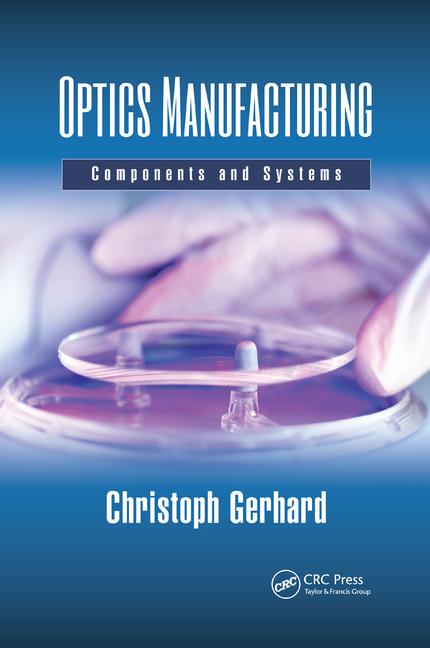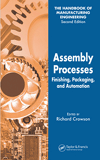Automation Profiles: System Handles Fragile Components
When a medical manufacturer approached Allied Automation to build a system to assemble an adhesive applicator, the company knew how to get the job done.
 Handling glass can be challenging for any automation project. Actuators and grippers have no appreciation for the delicacy of an object. They simply move where and how they're told. Glass parts in the wrong place at the wrong time are no match for hardened steel.
Handling glass can be challenging for any automation project. Actuators and grippers have no appreciation for the delicacy of an object. They simply move where and how they're told. Glass parts in the wrong place at the wrong time are no match for hardened steel.
Allied Automation has designed several systems that process thin glass containers safely and efficiently at high speeds. So when a medical manufacturer approached Allied to build a system to assemble an adhesive applicator, the company knew how to get the job done.
Besides the adhesive itself, the applicator consists of a plastic swab tube, a glass ampoule and a plastic filter tip. A solvent bonds the filter to the tube. The ampoule is only 0.004 inch thick and very fragile. In this profile, Allied’s president, Jeff Graham, and engineering manager, Nathan Marshall, describe how the machine works.
For more information, visit www.alliedautomation.com or call 919-362-4440.
Describe the system. The machine has two components: an eight-station rotary dial and a recirculating puck conveyor. The dial is equipped with removable nests that hold four parts each, so 32 assemblies are in process at any one time. Each puck carries eight parts, and the conveyor accommodates 800 parts.
The first station places four tubes in a nest and inspects for them presence and height. The second station lifts the tubes to set a datum, supports them from the inside, and punches vent holes, depending on the product. (Some products assembled on the dial do not require vent holes.)
The third station gently places the ampoules into each tube. Tooling at this station confirms the presence, length and integrity of the glass. At station four, the filters are pressed into the tubes to complete the assembly and retain the ampoule. We developed a system to support the tube, set the correct datum for assembly, and perform the press fit without collapsing the tube or crushing the ampoule.
The fifth position was intentionally left free of tooling to facilitate access to the machine for cleaning and maintenance-a critical and often-overlooked part of sound machine design.
The sixth position inspects and records the assembled height of the product. This is done with linear variable displacement transducers. We provided all the calibration masters for the inspection and provided an automated calibration sequence to walk the operator through the process using the touch-screen control.
At station seven, good assemblies are off-loaded to the conveyor, where the solvent is applied and cured. The solvent is dispensed with a resolution of ±0.1 microliter. Bad assemblies are indexed to station eight, where they are deposited in a bin.
What are the dimensions of the assembly? The machine handles two different product sizes. One is 52 millimeters long; the other is 72 millimeters long. Both are 8 millimeters in diameter.
What equipment feeds the parts? Vibratory bowls with bulk hoppers feed the tubes and filters. The ampoules are fed manually. We needed a fast, safe, reliable and easy-to-clean method of delivering ampoules full of glue to the machine. We also had to develop innovative ways to deal with the static electricity generated when feeding thin plastic parts.
What inspections are included? All parts of the assembly are inspected for presence, orientation and assembled height. Inspections are performed with photoelectric sensors, capacitive proximity sensors and linear encoder-based contact probes. Additional sensors monitor the level and displacement of solvent, as well as the correct position of every actuator on the machine during operation.
What is the production rate? 4,200 parts per hour, meaning 30,000 parts per shift or 90,000 parts per day. Only two people operate the entire system.
Did you help the customer design the product for assembly? We worked with the customer on defining the press fits and height tolerances to maximize throughput based on the size range and tolerance of components.
Can the system accommodate variants? The system handles two different product sizes both with and without vent holes. Changeover is fully automatic. The product to be assembled is selected through the touch-screen, and all machine adjustments are made automatically using pneumatic actuators.
What was the most challenging aspect of building the system? The system must handle an ampoule every second without breaking any, and it must be easily accessible for cleanup when ampoules do break. It was critical to the success of the project that we understood that glass and adhesive can and will get everywhere that you do not expect it.
We used chemical- and corrosion-resistant materials throughout the machine. The entire system is fully enclosed with tempered safety glass, so the windows stay clear even after cleaning with aggressive chemicals. All pneumatic actuators are equipped with corrosion-resistant rods. The system also had to comply with FDA requirements and clean-room specifications.
What features does the machine control include? Control of the machine is done through a color touch screen. DeviceNET distributed I/O and serial communication to the dispensing equipment keep the main control enclosure small enough to stay on the machine, which saves floor space. The entire system is protected from power outages and surges by an uninterruptible power supply. If an outage occurs during dispensing of the solvent, no product is lost. Every station is provided with a step-by-step walk-through function at the touch-screen to facilitate setup, calibration and maintenance.
Editor’s note: Whether you’re a systems integrator or the inhouse automation team of an OEM, if you’ve designed a system that you’re particularly proud of, tell us about it. Send an e-mail to John Sprovieri, editor of ASSEMBLY, at sprovierij@bnpmedia.com, or call 630-694-4012.

When designing this system to assemble an adhesive applicator, engineers knew that glass and adhesive can and will get everywhere that they do not expect it.
Allied Automation has designed several systems that process thin glass containers safely and efficiently at high speeds. So when a medical manufacturer approached Allied to build a system to assemble an adhesive applicator, the company knew how to get the job done.
Besides the adhesive itself, the applicator consists of a plastic swab tube, a glass ampoule and a plastic filter tip. A solvent bonds the filter to the tube. The ampoule is only 0.004 inch thick and very fragile. In this profile, Allied’s president, Jeff Graham, and engineering manager, Nathan Marshall, describe how the machine works.
For more information, visit www.alliedautomation.com or call 919-362-4440.
Describe the system. The machine has two components: an eight-station rotary dial and a recirculating puck conveyor. The dial is equipped with removable nests that hold four parts each, so 32 assemblies are in process at any one time. Each puck carries eight parts, and the conveyor accommodates 800 parts.
The first station places four tubes in a nest and inspects for them presence and height. The second station lifts the tubes to set a datum, supports them from the inside, and punches vent holes, depending on the product. (Some products assembled on the dial do not require vent holes.)
The third station gently places the ampoules into each tube. Tooling at this station confirms the presence, length and integrity of the glass. At station four, the filters are pressed into the tubes to complete the assembly and retain the ampoule. We developed a system to support the tube, set the correct datum for assembly, and perform the press fit without collapsing the tube or crushing the ampoule.
The fifth position was intentionally left free of tooling to facilitate access to the machine for cleaning and maintenance-a critical and often-overlooked part of sound machine design.
The sixth position inspects and records the assembled height of the product. This is done with linear variable displacement transducers. We provided all the calibration masters for the inspection and provided an automated calibration sequence to walk the operator through the process using the touch-screen control.
At station seven, good assemblies are off-loaded to the conveyor, where the solvent is applied and cured. The solvent is dispensed with a resolution of ±0.1 microliter. Bad assemblies are indexed to station eight, where they are deposited in a bin.
What are the dimensions of the assembly? The machine handles two different product sizes. One is 52 millimeters long; the other is 72 millimeters long. Both are 8 millimeters in diameter.
What equipment feeds the parts? Vibratory bowls with bulk hoppers feed the tubes and filters. The ampoules are fed manually. We needed a fast, safe, reliable and easy-to-clean method of delivering ampoules full of glue to the machine. We also had to develop innovative ways to deal with the static electricity generated when feeding thin plastic parts.
What inspections are included? All parts of the assembly are inspected for presence, orientation and assembled height. Inspections are performed with photoelectric sensors, capacitive proximity sensors and linear encoder-based contact probes. Additional sensors monitor the level and displacement of solvent, as well as the correct position of every actuator on the machine during operation.
What is the production rate? 4,200 parts per hour, meaning 30,000 parts per shift or 90,000 parts per day. Only two people operate the entire system.
Did you help the customer design the product for assembly? We worked with the customer on defining the press fits and height tolerances to maximize throughput based on the size range and tolerance of components.
Can the system accommodate variants? The system handles two different product sizes both with and without vent holes. Changeover is fully automatic. The product to be assembled is selected through the touch-screen, and all machine adjustments are made automatically using pneumatic actuators.
What was the most challenging aspect of building the system? The system must handle an ampoule every second without breaking any, and it must be easily accessible for cleanup when ampoules do break. It was critical to the success of the project that we understood that glass and adhesive can and will get everywhere that you do not expect it.
We used chemical- and corrosion-resistant materials throughout the machine. The entire system is fully enclosed with tempered safety glass, so the windows stay clear even after cleaning with aggressive chemicals. All pneumatic actuators are equipped with corrosion-resistant rods. The system also had to comply with FDA requirements and clean-room specifications.
What features does the machine control include? Control of the machine is done through a color touch screen. DeviceNET distributed I/O and serial communication to the dispensing equipment keep the main control enclosure small enough to stay on the machine, which saves floor space. The entire system is protected from power outages and surges by an uninterruptible power supply. If an outage occurs during dispensing of the solvent, no product is lost. Every station is provided with a step-by-step walk-through function at the touch-screen to facilitate setup, calibration and maintenance.
Editor’s note: Whether you’re a systems integrator or the inhouse automation team of an OEM, if you’ve designed a system that you’re particularly proud of, tell us about it. Send an e-mail to John Sprovieri, editor of ASSEMBLY, at sprovierij@bnpmedia.com, or call 630-694-4012.
Looking for a reprint of this article?
From high-res PDFs to custom plaques, order your copy today!






